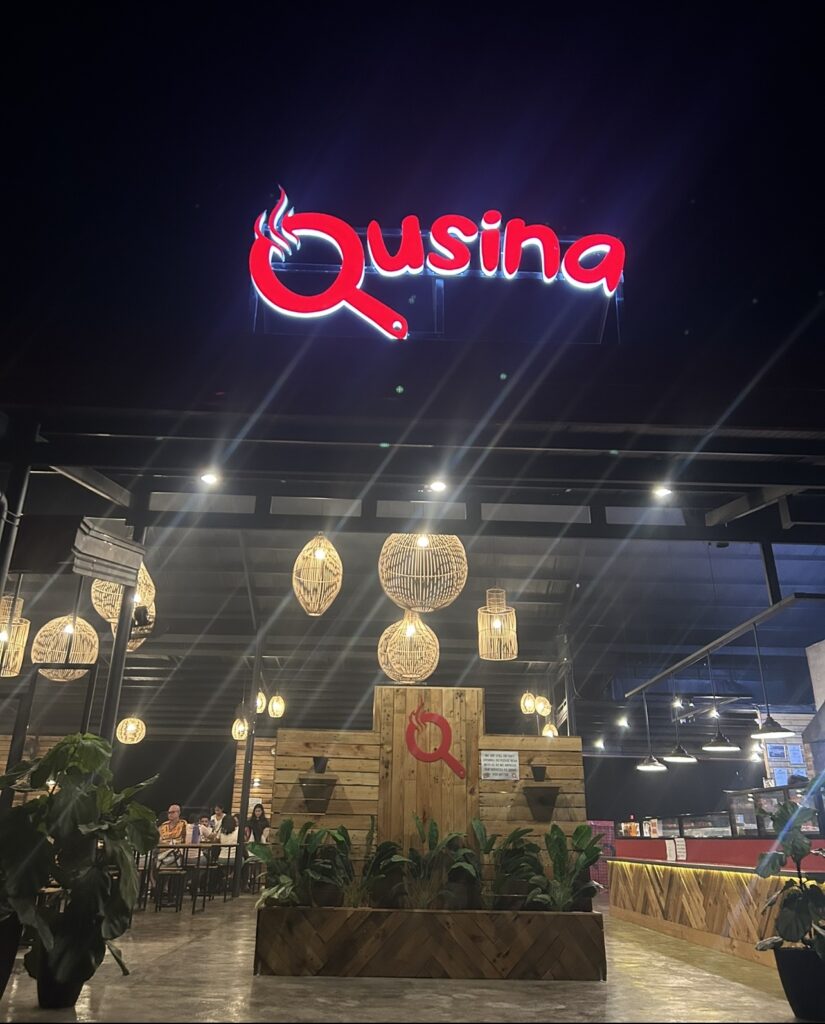“Cebu has always been celebrated for its gustatory delights and familial hospitality. It is made possible because of many amazing people in the industry who have stayed true to their cultural identity,” shares Megaworld Hotels and Resorts managing director Cleofe Albiso.
One of the most memorable meals I recently partook in was at the Belmont Hotel Mactan’s La Meza de Cebu-The Modern Filipino Table featuring Cebu’s local culinary trail.
Twelve executive chefs of Megaworld Hotels and Resorts around the country interpreted Visayan dishes in a nine-course meal that elevated the local cuisine. Taste buds stimulated, it got me thinking about what Cebuano food really is and where to go to experience it aside from home kitchens. The cuisine reflects a melting pot of regional tastes enriched by Filipino, Spanish, Chinese and American influences.

Amuse-bouche by executive chef Marlon Tibay of Richmonde Hotel, Ortigas was a tasty bite of Lechon Cebu Arancini with paste aioli, parmesan shave and Mang Tomas pearls.
Appetizer by executive chef Jose Ariel Castaneda of Richmonde Hotel, Iloilo was Kasahos (local beef jerky usually using carabao or horse meat), but his version used sundried USDA beef with glass potato, garlic confit, local goat cheese and Emperador demi-glace.
Soup was by chef Angelo Chubby Timban of Kingsford Hotel, Manila and consisted of Saang Laksa (spider shell commonly found in Mactan Island) with coconut milk, crispy egg noodles, ngohiong meatballs and lemongrass.

Labtingaw salad by executive chef Kit Carpio of Savoy Hotel, Manila was made with microgreens, rocket, tinap-anan flakes, green spicy mango dressing and pinakurat pearls.
Fish labtingaw was lightly brined and sundried. The process is popular in northern Cebu — Bantayan, Bantayan Island and Malapascua.

Sutukil, a coined abbreviation of three styles of cooking popularized by the Mactan Shrine seafood stalls — Su for sugba or to grill, Tu for Tuwa or Tola or stew and Kil for kinilaw or ceviche creatively making three dishes with one whole fish. The entree by executive chef Paolo Aviso of Belmont Hotel, Mactan was Sutukil made with grilled tanguigue (Spanish mackerel), kinilaw tanguigue in coconut cream dressing, tola consommé sphere, guso (seaweed twig), swahe mais (sea urchin and corn) and paella.
The USDA Ribeye Balbacua by executive chef Mario “Coke” Semblante of Savoy Hotel, Mactan was a rich and sticky stew made of beef or ox skin, tail, tripe or tendons simmered to tenderness. His unique version was a soulful reduction of all ox skin caviar, peanuts, kamote mille feuille and tuslob buwa foam.
Intermezzo by executive chefs Rassel Joy Adagan of Savoy Hotel Boracay and Paul Dane Aligaen of Belmont Hotel, Boracay was a refreshing Lemonsito Sorbet with pearls, mint and orange salt powder.

For dessert, Lupa ng Cebu by executive chef Pedro Pete Paluga of Eastwood Richmonde Hotel was inspired by masareal (a sweet nut snack from Mandaue City), polvoron, edible white chocolate limestone and edible pumice stone representing the islands of Cebu, being famous for its white sand beaches. Mactan Island, meanwhile, is known for its Mactan stone.
To cap off the night’s feast, the ultimate Halo Halo sa Tanan was the perfect choice — Torta is a famous delicacy of Argao, Bogo’s pintos streusel, tablea and bukayo (sweetened coconut strips) coming together as one spectacular combination of sweet heritage.
New local al fresco restaurant
A week later, I joined my high school friends visiting from California, Veronica Go-Sia from Belmont and Blesyl Sia-Tan from Sacramento, at this new local al fresco restaurant in our neighborhood. Cebu is more known for its casual comfort eats where creatures of habit frequent. A few have become institutions but sometimes, it is the nostalgia that makes the food taste better and we are left to hanker for the imagined flavors of yesteryears.

Aptly called Qusina, the industrial space warmed with pinewood accents and inviting lighting is the convivial and professional version of Donald Que’s home kitchen.
Que finally decided to share his love for good food and passion for Cebuano cooking, opening the restaurant with Dennis Que, Grant Go and Bruce Chan.
Living on an island, it always confounded me how local restaurants did not offer good fresh seafood. I was most impressed with Qusina’s daily fresh catch of wild caught sustainable fish — cobia (tasik) and blue marlin, which one can have as grilled steaks or as nilarang (a spicy and sour fish stew) and inun-unan (Visayan paksiw na isda).

Their offerings are divided into five segments: Soup (nilarang, pochero, balbacua); Grill (meat and seafood); Turo-Turo (beef qare qare, dinuguan, bisaya manok adobo, baqareta); All-Day Breakfast (silog meals); and A La Carte (sinuglaw, sizzling dalupapa, inun-unan na isda).
Slow cooking with the best and freshest ingredients, careful preparation and execution translates to simple, clean and tasty local fare all in one roof. Resonating with the laidback Cebuano lifestyle, one sees all walks of life congregating at Qusina for good food, below zero beer, Friday acoustic nights or live telecasts of sports events.
